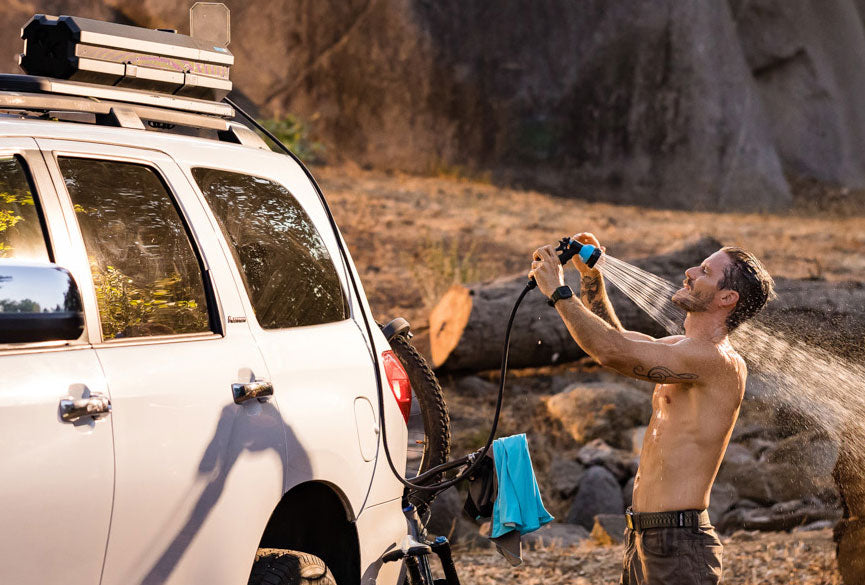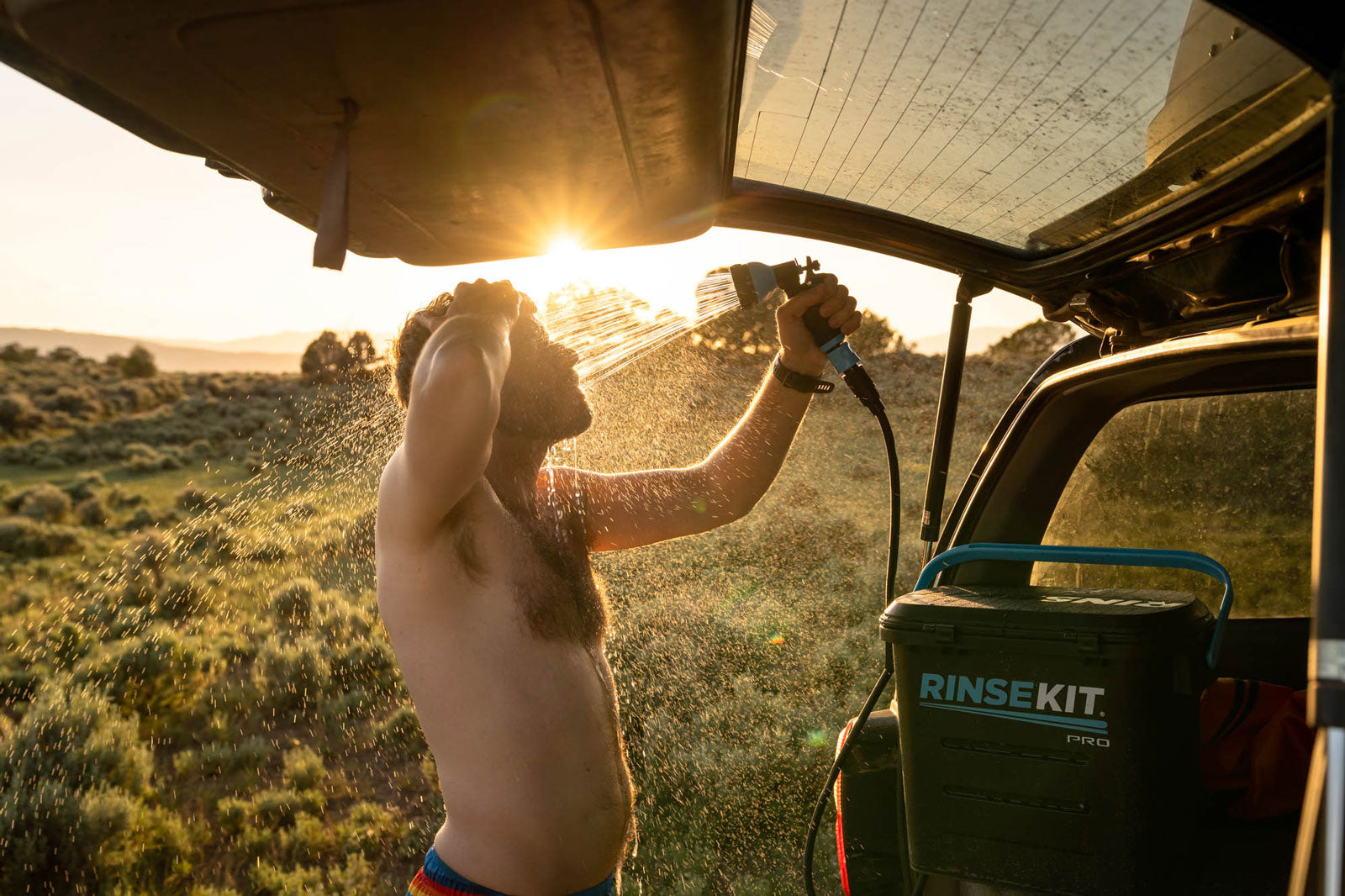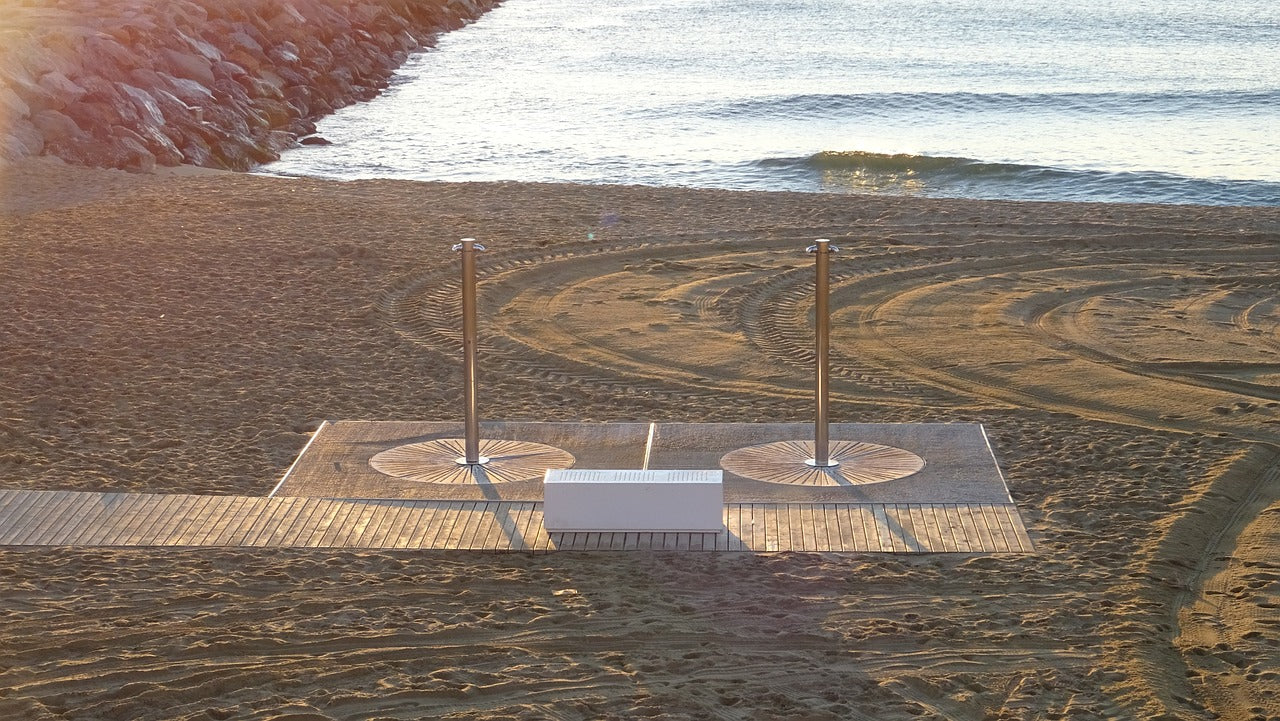
Introduction
If you’re a hardcore camper, you know the dilemma. You’ve had a long day hiking, chopping wood or fishing, and at the end of it, you’d love nothing more than a refreshing hot shower. Unfortunately, if you’re in the wilderness, you don’t have the luxury of a campsite shower facility - so you’re limited to whatever water you bring, and wasting your precious drinking water on a shower is simply not an option. It’s in these situations, where all you have is your vehicle, but you need a way to sanitize yourself, where a roof rack shower can be a lifesaver.
In this article, we will explore the benefits and features of roof rack showers, installation options, and how they can enhance your outdoor experience.
What is a Roof Rack Shower?
A roof rack shower is a portable shower system designed to be mounted on the roof rack of your vehicle. It allows you to have access to a pressurized water source wherever your adventures take you. The system typically consists of a water storage container, a pump, a showerhead, a hose, and plumbing connections.

The Benefits of Roof Rack Showers
Convenience and Mobility
One of the primary advantages of a roof rack shower is its portability. With a roof rack shower, you can have a refreshing shower no matter how far off-grid you roam, as long as you have your vehicle. Whether you're camping in the wilderness, spending a day at the beach, or exploring remote trails, you can easily bring your own personal shower with you.
Access to Clean Water
Having access to clean water is crucial, especially when you're spending time outdoors. Roof rack showers can be filled with water from various sources, such as a tap, a stream, or a portable water container. This ensures that you have a clean and reliable water source for showering, washing dishes, or cleaning gear.
Versatility and Multi-purpose Use
Roof rack showers offer more than just a convenient way to shower while on the road. They can be utilized for various purposes, such as rinsing off sandy feet after a day at the beach, washing muddy gear after a hiking adventure, or even providing water for cooking and cleaning at your campsite. The versatility of a roof of rack shower makes it a valuable tool for any outdoor enthusiast.
How to Install a Roof Rack Shower
Installing a roof rack shower is a straightforward process that can be done with a few simple steps. Here's a step-by-step guide to help you get started:
Choosing the Right Roof Rack
Before installing a roof rack shower, you need to ensure that your vehicle has a compatible roof rack system. There are various types of roof racks available, including crossbars, roof rails, and gutter mounts. Choose a rack that suits your vehicle and provides a secure and stable platform for mounting the shower system.
Some roof rack showers can also be installed on bed rails, gear tracks, T slots, 80/20 bars, camper racks and molle panels, so depending on the roof rack shower you choose, there may be other racking configuration available than just the roof.
Selecting the Water Storage System
Next, choose a suitable water storage system for your roof rack shower. Options range from traditional jerry cans to purpose-built water containers designed specifically for roof rack showers. Consider factors such as capacity, durability, and ease of filling and emptying when selecting your water storage system.
Testing and Adjusting the System
Once the installation is complete, it's important to test your roof rack shower system before hitting the road. Fill the water storage container and check for any leaks or issues with water flow. Adjust the showerhead and hose positioning to ensure optimal water coverage and pressure.
Best Practices for Using a Roof Rack Shower
To make the most of your roof rack shower experience, here are some best practices to keep in mind:
Water Conservation
When using a roof rack shower in outdoor settings, it's essential to practice water conservation. Be mindful of your water usage and avoid excessive wastage. Consider using a water-saving showerhead or incorporating quick-rinse techniques to minimize water consumption.
Temperature Regulation
Since most Roof Rack showers are dark in color and sit on the roof of your vehicle, the water inside of them, especially in warm climates, can get very hot very easily. If you are going to be showering on a hot day in Summer, you may want to wait until the Sun goes down and the water cools down a bit before taking a shower.
Alternatively, if you are in a cold climate, the water in the shower may stay cold even if there is abundant sunshine. In this case, you may want to get a heating device for your roof rack shower to heat the water up before you use it.
Privacy Considerations
While outdoor adventures offer a sense of freedom, privacy is still important. Choose secluded areas or use privacy tents or shower enclosures to maintain your privacy while using the roof rack shower. Respect the natural surroundings and follow any guidelines or regulations regarding showering in outdoor areas.
Maintenance and Care Tips
To ensure the longevity and optimal performance of your roof rack shower, here are some maintenance and care tips:
Cleaning and Sanitizing
Regularly clean and sanitize your roof rack shower system to prevent the buildup of dirt, bacteria, and mold. Use mild cleaning solutions and thoroughly rinse all components. Pay special attention to the showerhead and hose, as they are in direct contact with water.
Storage and Protection
When not in use, store your roof rack shower in a clean and dry area. Consider using protective covers or bags to prevent damage from dust, UV rays, or harsh weather conditions. Inspect the system before each use to ensure all components are in good working condition.
The Types and Brands of Roof Rack Showers Currently Available
While roof rack showers are a popular outdoor item, there are currently only four main types / brands of roof rack shower out there. They are:
DIY / PVC Pipe Showers
While DIY isn’t a brand, many crafty adventurers opt to make their own roof-mounted showers with PVC pipe. This option can certainly work for those that want a cheap option, but as far as an actual shower goes, they don’t provide near the pressure or functionality as other options.
As we said, typically these showers are crafted from a long, thick PVC pipe. They are painted black to absorb the Sun’s heat, and require an air pump, like one you’d use to fill up your car tires at a gas station, to create pressure. They do require some significant DIY know-how, so to make a proper one you really have to know what you’re doing. Depending on the build, they also cannot hold much pressure (max 15-20 PSI), so the water pressure is typically sub-par.
PROS
- Cheap
- Can be customized
- Can be high capacity
CONS
- Low pressure
- Can only be used for 1-2 showers without having to repressurize
- Leak or explode easily
- Cannot repressurize in the field
- Can be difficult to fill
- Limited mounting options
The Waterport Weekender
Waterport is another portable shower manufacturer that makes a variety of portable showers. models. The ‘Weekender’ is their roof rack portable shower, and is one of the newer models in their product line.
The Weekender is a self-pressurized system. This means that to pressurize it, it must be hooked up to hose. The hose pushes water into the tank, resulting in the compression of air inside. This compression generates pressure, which is then released when the hose is activated, propelling the water out.
While this self-pressurization method initially generates significant pressure, over time and with water usage, the pressure decreases. While you can use a hand pump to repressurize the tank on-the-go, it takes a lot of effort to reach the initial pressurization the hose provides.
It's important to note that plastic containers, like the Waterport system, are generally not designed to withstand pressure. Manufacturers do not provide warranties for plastic water containers as they are not sufficiently strong to fully contain pressure. If there are any issues with seals or gaskets, leaks can occur with this type of portable shower.
Another thing to note with these self-pressurized systems is that the stated capacity of the Waterport Weekender tank is not its actual capacity. Since the tank requires space for compressed air to generate pressure, it cannot be filled to its maximum water capacity.
PROS:
- High capacity
- Long hose lengths
- Pressure is good initially
CONS
- Pressure decreases with use
- Plastic tank is prone to failure
- Limited mounting options
- Stated capacity is not true capacity
- Cannot be repressurized without a hose or by hand pumping
- Not easy to use
The Yakima Road Shower
Similar to the Waterport, the Yakima RoadShower operates on self-pressurization and has a larger tank capacity of around 8 gallons. However, like the Waterport Weekender, the stated capacity does not account for the necessary space for compressed air. Additionally, the Yakima RoadShower can only be mounted on crossbar racks.
As with the Waterport Weekender, the method to pressurize the Yakima RoadShower presents significant challenges. The RoadShower is pressurized via a schrader air valve with a hand or electric pump, so it loses pressure as the water is used. While it can be repressurized by a hand pump, as we stated earlier, that method can be pretty inconvenient when you are out in the field and desperately need a shower.
PROS:
- High capacity
- Long hose lengths
- Pressure is good initially
CONS
- Can only mount to one type of roof rack
- Pressure decreases with use
- Stated Capacity is not true capacity
- Limited mounting options
- Cannot be repressurized without a hose or by hand pumping
- Not easy to use
The RinseKit Rack Shower
The RinseKit Rack Shower is similar in form to both the Yakima RoadShower and the Waterport Weekender, but unlike these models, the RinseKit Rack Shower utilizes battery-powered pressurization to create pressure in its tank. How this works is that a powerful AGM battery powers a diaphragm water pump in the tank. This pump creates consistent pressure at the push of a power button, which means that the Rack Shower never has to be hooked up to a hose or pressure source, and can be refilled from any water source.
This battery-powered pressurization makes it so that the Rack Shower maintains 50 PSI of pressure down to the last drop. So unlike both the Road Shower and Waterport, the Rack Shower doesn’t lose pressure as water is used, and never has to be repressurized. It is also not prone to the potential failures of overpressurization and leaking that the Waterport and RoadShower are prone to.
Its huge lead acid battery also only has to be charged every 4-6 months, so you don’t have to worry about charging it before every outing. And the water pump is rated at 15,000 hours of use, so you can rest assured that it will last years and years of regular usage.

Since the Rack Shower is battery-powered it also boasts unique tech features that the Yakima RoadShower and Waterport Weekender do not. Its innovative control panel has a battery and water temperature gauge display, so you can always know how much battery is left as well as how warm the water is inside the tank. It also comes with dual USB ports and a 12v plug for powering devices, so you can charge your phone, laptop or stove off of the RinseKit.
The RinseKit Rack Shower also has a unique design with T-Channels on each side of it. This means that it can be mounted on all four sides and can be mounted on basically any type of mounting system, including crossbars, roof rails, gutter mounts, bed rails, gear tracks, T slots, 80/20 bars, camper racks and molle panels. So the Rack Shower is not only the easiest, most powerful, and most tech packed roof rack shower out there - it is the most versatile when it comes to mounting options as well.
PROS:
- High capacity
- Stated capacity is true capacity
- Easy to use and easy to fill on the go
- High pressure spray
- Consistent pressure
- Can be filled from any water source
- Battery and Water temperature gauge
- Comes with Dual USB ports and 12v Plug for charging external devices
- Easy to install
- Can be mounted on any mounting system
- Not prone to bursting or leaking
CONS
- Capacity isn’t as high as other rack mounted showers

So you can see that the different types of roof rack showers have their pros and cons, but if you are looking for the most dependable, easy to use and versatile roof rack shower out there, the Rack Shower is the way to go. To compare the models more easily, here’s a simple chart laying out the differences between the models:

Roof rack showers have revolutionized the way outdoor enthusiasts access clean water while on the go. Their convenience, portability, and versatility make them a valuable addition to any outdoor adventure. With proper installation, maintenance, and responsible water usage, roof rack showers provide a refreshing and convenient showering experience, even in the most remote locations.
So, whether you're embarking on a camping trip, going off-road, or simply spending a day at the beach, consider investing in a roof rack shower. It will undoubtedly elevate your outdoor experience and ensure you stay clean, refreshed, and ready for your next adventure.



